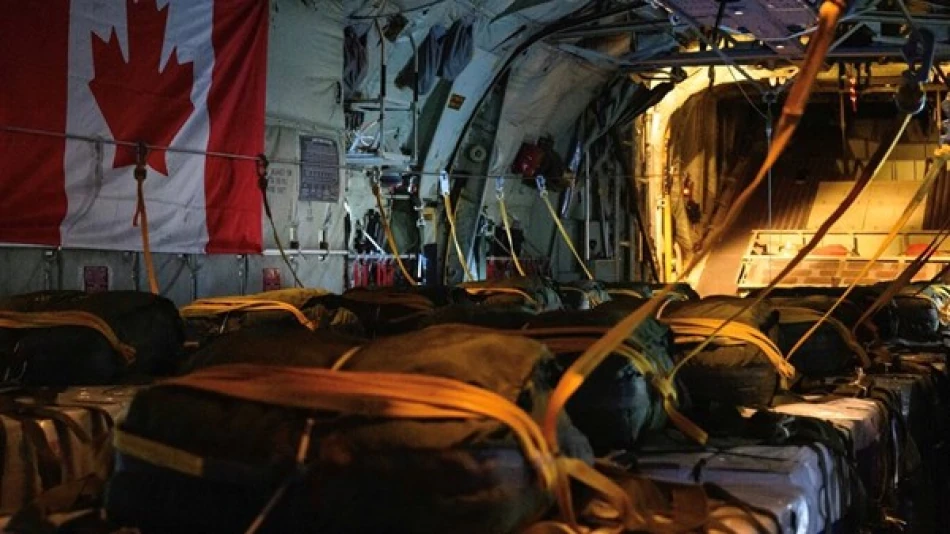
Canada Conducts Aerial Humanitarian Aid Drops Over Gaza, Offering Relief Amid Conflict
Canada Joins Western Coalition in Gaza Airdrops as Humanitarian Crisis Deepens
Canada has executed its first airdrop of humanitarian aid to Gaza, delivering nearly 10,000 kilograms of supplies using a military aircraft on Monday. The move signals Ottawa's growing involvement in international efforts to address what Prime Minister Mark Carney described as a rapidly deteriorating humanitarian catastrophe, placing Canada alongside a growing Western coalition conducting similar operations.
Military Operation Details
The Canadian Armed Forces deployed a CC-130J Hercules aircraft over Gaza to execute the airdrop mission, according to a joint statement from Foreign Minister Anita Anand and Defense Minister David MacGinty. The operation represents a significant logistical undertaking, with the nearly 10-ton payload marking Canada's most substantial single aid delivery to the territory.
The choice of the CC-130J Hercules aircraft is strategically sound—this military transport plane has proven effective in humanitarian missions worldwide and offers the precision needed for airdrops in densely populated areas like Gaza.
Political Context and Messaging
Prime Minister Carney's public statements underscore the urgency Canada perceives in the situation. His social media declaration that "the humanitarian catastrophe in Gaza is rapidly deteriorating" reflects a more assertive Canadian stance on the crisis than seen in previous conflicts.
Carney emphasized that Canada is intensifying efforts with international partners to develop a credible peace plan, while ensuring adequate aid delivery. This dual approach—immediate humanitarian response coupled with longer-term diplomatic engagement—mirrors strategies employed by other Western nations grappling with the crisis.
International Coalition Building
Canada's entry into Gaza airdrops places it within a growing Western alliance that includes France, Germany, Belgium, and Spain, all of which have conducted similar operations in recent days. This coordinated approach suggests a deliberate strategy among NATO allies and EU partners to maintain humanitarian engagement despite complex ground conditions.
Comparative Analysis of Western Responses
The timing of Canada's involvement is notable—joining after European allies had already established the precedent suggests Ottawa was carefully evaluating the political and operational implications. Unlike the immediate responses from France and Germany, Canada's measured approach reflects its traditional preference for multilateral engagement over unilateral action.
The scale of Canada's contribution—10,000 kilograms in a single drop—is substantial compared to typical European operations, potentially reflecting Canada's significant military transport capabilities and its desire to make a meaningful impact upon entry.
Strategic Implications
For international observers, Canada's participation represents a broadening of Western involvement beyond traditional Middle East stakeholders. This expansion could signal sustained international attention to the Gaza crisis, potentially influencing regional diplomatic calculations.
The coordinated nature of these airdrops also demonstrates Western nations' ability to conduct complex humanitarian operations despite challenging geopolitical circumstances. This capability may prove crucial as the humanitarian situation continues to evolve.
The emphasis on developing a "credible peace plan" alongside immediate aid delivery suggests Canada views these airdrops as part of a broader diplomatic strategy rather than merely humanitarian gestures. This integrated approach could provide a model for sustained international engagement in the region.
 Layla Al Mansoori
Layla Al Mansoori







